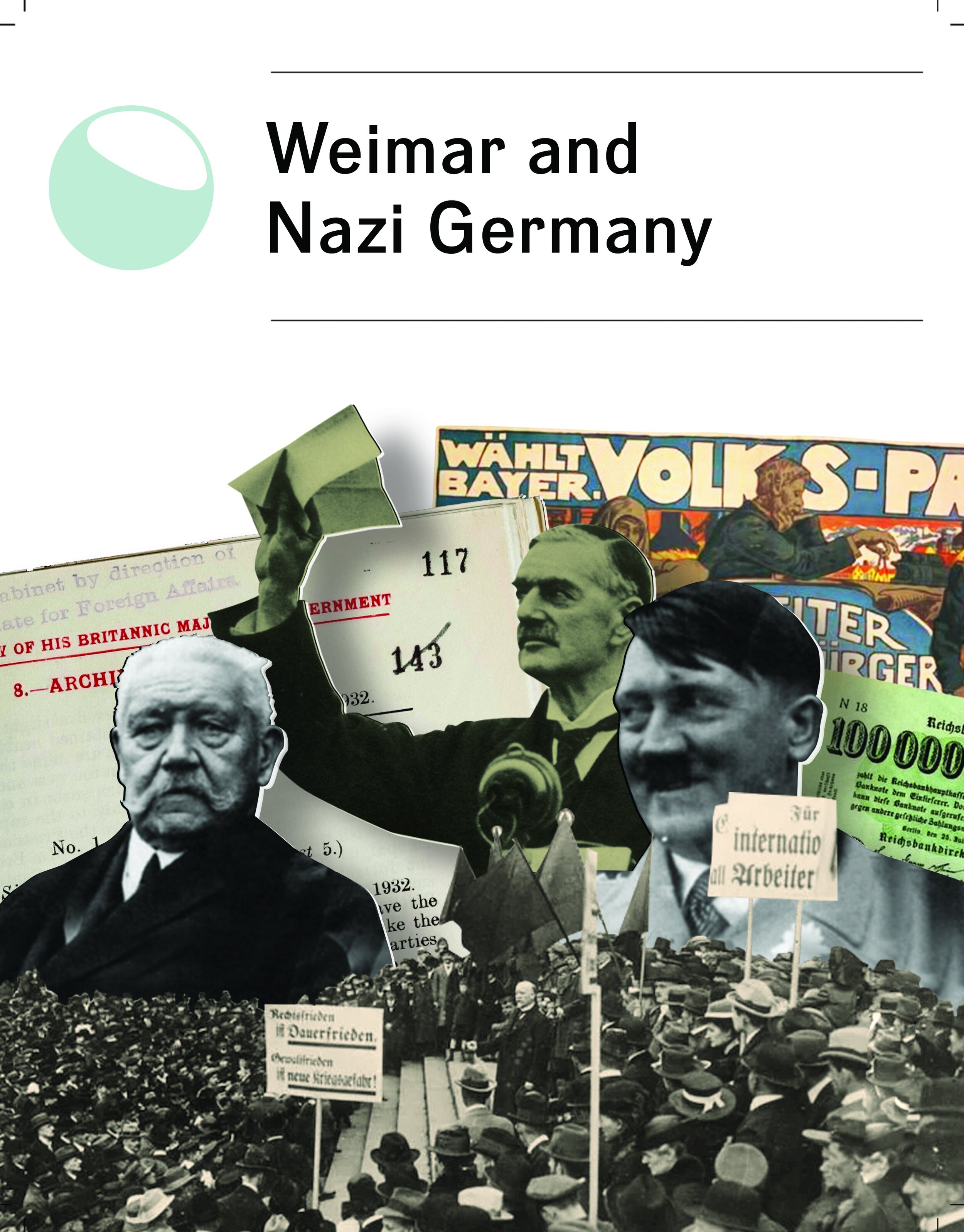
Weimar and Nazi Germany
The only English-language, digital, primary-source archive to cover Germany from 1918 to 1939. It includes nearly 600,000 pages of declassified, exclusive, previously undigitized files sent to the UK Foreign Office from embassies, covert contacts, and other sources.
Weimar and Nazi Germany documents an intense time of hyperinflation, political extremism, and seizures of power. It details the aftermath of World War I, recovery following the war, the Great Depression, and Hitler’s rise, providing contemporaneous accounts, documents, reports, and correspondence of how Western democracies struggled with fascism and autocracy.
Most of the material is in English and therefore easily accessible to researchers. It includes materials examining events of importance to most European countries, especially the rise of fascism in Spain and Italy.
For the first time, the full text of the files can be searched with keyword and proximity functionality. Hundreds of thousands of pages of critical materials can now be mined with sophisticated tools.
Report on the Bier Keller Putsch :The Government cannot escape their responsibility….they …allowed him to carry on…and train and arm bands of young men until the movement had gone so far they feared to stop it.” Click to view larger version.
Key events
The German Revolution of 1918-1919
Allied occupation of the Rhineland
The peace treaties, including the Treaty of Versailles
The Spartacist uprising of January 1919
Reichstag elections & cabinet formation
Hyperinflation, 1923
The Beer-Hall Putsch and Hitler’s trial
The Dawes Plan
The Kellogg-Briand Pact
The Great Depression
The Reichstag fire
Hitler appointed Chancellor
The creation of concentration camps
The passing of anti-Semitic laws
The banning of political parties
Germany’s departure from the League of Nations
The Night of the Long Knives
The remilitarization of the Rhineland
The Berlin Olympics
The 1936 Italo-German Treaty and Mussolini
Anschluss with Austria
Foreign aggression and expansionism
Bombing of Guernica and the Spanish Civil War
Invasion of Czechoslovakia
Nazi-Soviet Non-Aggression Pact
Munich Agreement
Kristallnacht
Invasion of Poland
For learning
Students will be excited to engage with previously secret primary sources. Additional learning tools include:
Specially commissioned subject essays written by members of the Editorial Board.
A guide to organizations, committees, and subcommittees, including political parties.
A guide to the key figures who appear in the files and who played important roles in the events discussed. The list provides a new route into the study of the period.
Video support tools
Suggested syllabi
For research
Materials are selected from FO 371, one of the most used file series at the National Archives. Every file from 1918 to 1939 categorized as “Germany” or “Rhineland” has been digitized. These files contain Foreign Office and British Embassy reports, correspondence, memoranda, communications, transcripts of speeches and public statements, newspaper cuttings, international agreements, and analyses.
Of particular interest is the FO 800/268-270 series containing the correspondence of Nevile Henderson, Britain’s last ambassador to Germany before World War II. These files provide a personal account of meetings with Nazis at the top of government and of the events that led to WWII.
Sample documents
GERMAN REVOLUTION, NOVEMBER, 1918
As the German empire descends into revolution at the end of World War I, the Foreign Office reports on the key event that marked the beginning of the end of the monarchy: the sailors’ mutiny at Wilhelmshaven.
It is reported that a “Workmen’s and Soldiers Council” had taken control and declared a new republic in northwest Germany.
GUSTAV STRESEMANN APPOINTED CHANCELLOR, AUGUST 1923
Gustav Stresemann is appointed Chancellor at the height of the hyperinflation crisis. The British ambassador to Germany takes this opportunity to recount his past candid conversations with Stresemann and give an assessment of his character and readiness to govern.
Intriguingly, Stresemann foresaw that the Communists might pose immediate difficulty for the government but that in the long term a “Nationalist reaction” was the greater threat.
Search fields
Materials can be searched using the following fields:
Document Type
Countries and Dependencies (standardized)
Regions (Bundesländer as of 1920)
Urban Centre
Key Events
Languages
Organizations
People
Keywords
Copyright
Notes
Descriptions of the contents of subfolders
Document Types
External Correspondence
Government Correspondence
Intergovernmental Correspondence
International Agreements
Legal and Official Government Material
Maps
Meeting Minutes
Press, Media, and Print Publications
Reports
Speeches and Public Statements
Tables and Graphs
Visual Media
Miscellany
Editorial board
Ulrike Zitzlesperger (University of Exeter)
Erik Jensen (Miami University)
Raffael Scheck (Colby College)
James McSpadden (University of Nevada)
Michael Abrahams-Sprod (University of Sydney)
Daniel Hucker (University of Nottingham)
Andrew Webster (Murdoch University)
Access options
Weimar and Nazi Germany is currently available as a one-time purchase of perpetual rights or through annual subscription on the History Commons platform with features including:
Ability to cross-search across all the history collections, with additional discovery tools
Updated, fast user interfaces, with mobile versions
Search tables hidden within documents and export the data
Enhanced search tools, including Boolean and proximity operators
Zooming, printing and downloading
Free hosting of your related content









